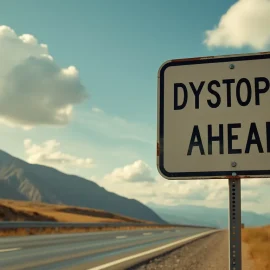
This is a free excerpt from one of Shortform’s Articles. We give you all the important information you need to know about current events and more.
Don't miss out on the whole story. Sign up for a free trial here .
How is CRISPR revolutionizing medicine and agriculture? What obstacles and ethical debates stand in the way of its widespread use?
CRISPR gene-editing technology is facilitating groundbreaking treatments for genetic diseases and it’s promoting global food security. Continued improvement of CRISPR technology could drive personalized medicine, provide new treatments, and revolutionize agriculture and industrial biotechnology.
Here’s a look at the potential uses of CRISPR technology, and the obstacles and implications that come with it.
Clustered Regularly Interspaced Short Palindromic Repeats
Recent advances in CRISPR gene-editing technology have delivered a groundbreaking treatment for sickle cell disease. This gene-editing tool stands to revolutionize health care and tackle head-on some of the world’s most pressing challenges in agriculture, bioenergy, and industrial biotechnology.
Background
CRISPR, which stands for Clustered Regularly Interspaced Short Palindromic Repeats, is a component of bacterial immune systems that can cut DNA. Used as a gene-editing tool, it allows scientists to alter DNA sequences and modify gene function like a microscopic pair of scissors—with a protein called Cas9 doing the cutting. Guided by a tiny piece of RNA, Cas9 locates and snips the spot scientists want to cut in the DNA. Once the cut is made, cells naturally repair the break. Researchers can use this repair to add or remove specific genetic material, tweaking the DNA sequence as needed.
CRISPR Progress and Pursuits
CRISPR’s potential is vast, with recent developments and ongoing work illustrating its transformative effect across various fields, including:
1. The first-ever CRISPR treatment for sickle cell disease—a debilitating, life-shortening genetic disorder that impacts roughly 100,000 Americans, most of them Black, and millions more worldwide.
The milestone could open doors to treating other genetic disorders and diseases, including muscular dystrophy, cancer, and heart disease.
2. The creation of a high-yield, disease-resistant rice. This breakthrough came after scientists discovered a mutated, disease-resistant, but low-yield rice plant. They used CRISPR to tweak the relevant gene, successfully supercharging the plant’s yield without sacrificing disease resistance.
3. Comprehensive CRISPR trials aimed at a wide array of diseases. Scientists are taking aim at blood disorders, cancers, HIV, diabetes, and neurodegenerative disorders, among others.
Obstacles and Implications of CRISPR
Despite its groundbreaking potential, CRISPR poses major challenges, including:
- The complexity of accurately editing genes without triggering unintentional genome effects or adverse immune responses.
- Concerns about the treatment’s longevity and durability. It’s unclear whether the treatment will remain effective in the long term, extend patients’ lifespans, or cause unforeseen complications like adverse health effects.
CRISPR also comes with considerable ethical and social implications, including those related to:
1. Heritable (germline) editing, which alters the genes in eggs, sperm, or embryos that can be passed on to children. The practice is controversial because it centers on changing genetic material that will affect future generations who can’t consent. It also raises concerns about unforeseen consequences, potential misuse for nonmedical enhancements, and sensitive debates around altering human genetics—including the perception of genome editing as meddling with divine design.
2. Hurdles to universal access. CRISPR treatment can be extremely expensive. For example, treatment for sickle cell costs $2.2 million per patient, raising concerns about its feasibility for Americans with limited financial means and individuals in less affluent countries, which are disproportionately impacted by the disease.
Looking Ahead
Experts say that while CRISPR technology has great potential, improvements in delivery, safety, and effectiveness are needed before it can be used to tackle a wider range of diseases.

Want to fast-track your learning? With Shortform, you’ll gain insights you won't find anywhere else .
Here's what you’ll get when you sign up for Shortform :
- Complicated ideas explained in simple and concise ways
- Smart analysis that connects what you’re reading to other key concepts
- Writing with zero fluff because we know how important your time is






